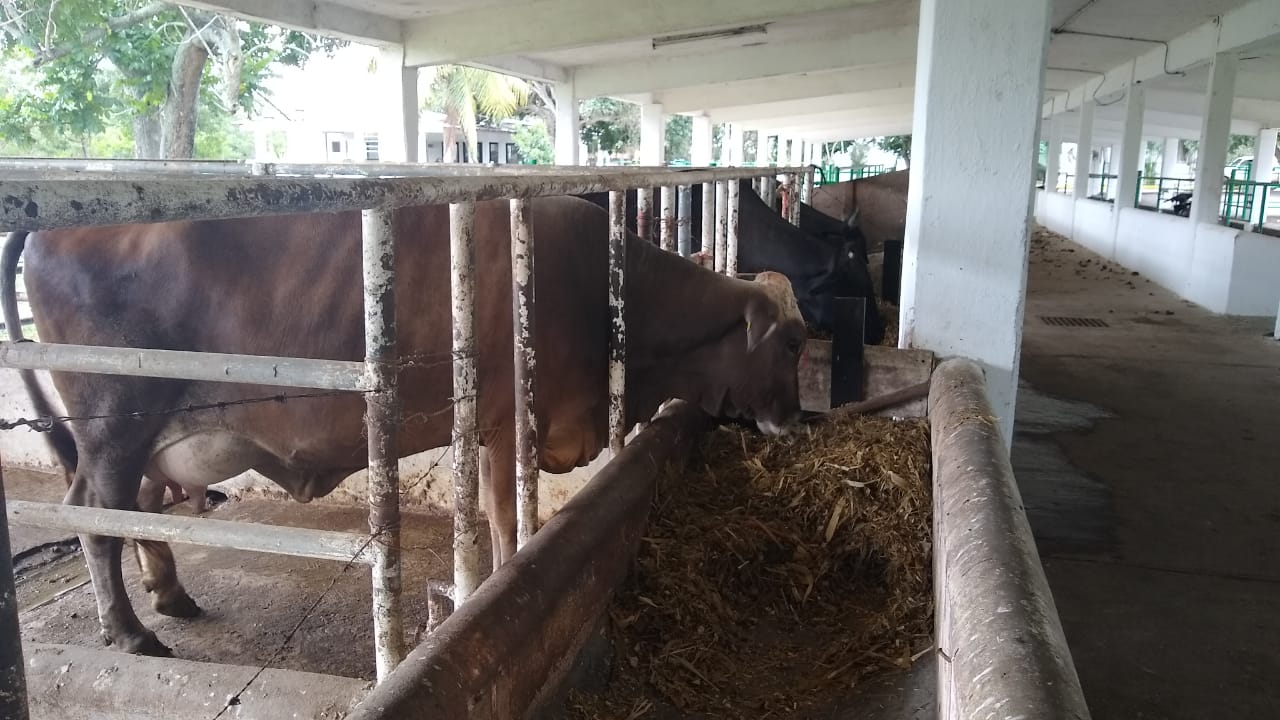Fiber (NDF) consumption and its effect on the response to FTAI in cows of the tropics of Mexico
Consumo de FDN y su efecto sobre la respuesta a la IATF en vacas del trópico de México


This work is licensed under a Creative Commons Attribution-NonCommercial-ShareAlike 4.0 International License.
Show authors biography
Objective. To evaluate the reproductive performance of crossbred cows in the tropics of Mexico fed two levels of neutral detergent fiber (NDF), eliciting them to ovulate with a hormonal protocol and fixed-time artificial insemination (FTAI). Material and methods. Twenty-seven multiparous cows were used. Twenty-one days before calving, cows were assigned to two treatments: T1= 4.5 kg of concentrate/cow/d and T2= 3.0 kg of concentrate/cow/d, and forage ad libitum in both treatments. Results. Cows assigned to T2 consumed more NDF (p<0.05) than cows assigned to T1 (38 vs 44% of the diet). The increment in forage consumption, up to the NDF allowed, compensated the provision of metabolizable energy (ME) and protein (MP), which were similar in cows of both treatments during the 15 days before calving. Cows fed with T2 tried to compensate the nutrients deficit consuming more forage (6.25 vs 7.37 kg of DM/d). The MP was always deficient during lactation for T1 and T2 cows. In T2 cows, the MP deficiency resulted in less milk nitrogen content. Cows assigned to T1 lost less body condition, which resulted in higher (p<0.05) pregnancy rate at first service (75.2 vs 42.8%), although they did not produce more milk than T2 cows. Conclusions. NDF reduction in the ration from 44 to 38% and the application of the FTAI hormonal protocol reduce the open period to 105 d in lactating cows in the tropics.
Article visits 686 | PDF visits























